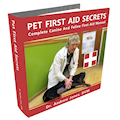 Pet First Aid: Complete Canine And Feline First Aid Manual |
As a pet owner, one of my worst fears is having my dog or cat hit
by a car. In the Vet world, we call this HBC.
SIGNS
You may see it, and then its obvious. Often though cats and dogs
are HBC’s and the only external signs are a few scrapes. They may
be limping, or have difficulty breathing.
SOLUTIONS:
CALL YOUR VET ASAP.
ASSESS BREATHING.
I often see lung injuries from car accidents. Does your pet appear
to be breathing normally, or is she labored, breathing with her
mouth open. A common injury is pneumothorax, in which a part of the
lung collapses, causing progressive respiratory distress. (Mouth
breathing, large, deep chest or stomach movements in an attempt to
get air into the lungs). In this case you need IMMEDIATE veterinary
care.
CHECK HEARTBEAT.
The easiest way is to place your ear against the chest behind the
left elbow. You can also feel for a pulse by placing your fingers
in the groin (inside the thigh of the back legs).
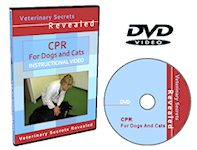 Pet CPR: Training DVD Video |
CPR
If your pet is non-responsive, then go through the CPR steps.
1. Assess responsiveness
2. Establish a patent airway
3. Perform rescue breathing
4. Cardiac massage – establishing circulation
You will have to exert a lot of force with large dogs, but don’t
worry about breaking ribs for they will heal.
After every minute, stop and check for a pulse or breathing.
Continue heart massage compressions and the rescue breathing until
you hear a heart beat and feel regular breathing. ONCE your pet is
breathing and his heart is beating, CALL your veterinarian
immediately!
GUM COLOR.
This is a great measure of blood pressure, to determine if shock is
present, and to evaluate for internal bleeding. The gums should be
a healthy pink color. If they are pale, then your pet needs to be
treated for shock and transported to a vet ASAP.
STOP BLEEDING.
If there are obvious areas of bleeding, then stop them NOW. Apply
direct pressure with a clean cloth or gauze. Hold this in place for
at least 5 minutes.
COVER WOUNDS.
Covering open wounds will keep them clean and help prevent
infection. Bandage material is preferable, but a towel will work
fine until you get to the vet.
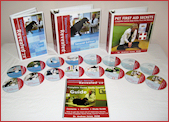 Veterinary Secrets Revealed Complete Home Study Course |
SUPPORT A FRACTURE.
If your pet is not using a leg, suspect a fracture. If the leg is
dangling, and bent at an unusual angle, then you should attempt to
immobilize it until you get veterinary care. Place a towel around
the leg. Wrap the inside of the leg with material to partially
splint the limb: newspaper, magazine or even bubble wrap. Cover
this with tape to keep the newspaper next to the towel.
MOVE WITH CARE.
Carefully transport your pet. A firm surface works best. If
possible, put your pet on a wooden board. This is best done by
first gently sliding him onto a sheet, then sliding the sheet onto
the board. If you don’t have any of this available, don’t worry,
the most important thing is rapid transport to your vet. Lift your
pet by cradling him (left arm around his chest and right arm
around his rear).
This discussion about car accidents leads me to the final part of
the day 7 e-course. Every pet owner should have a Pet First Aid
Kit.
Here are some basic items that all first aid kits should contain.
1. Rectal Thermometer – the newer electronic kind works best. The
electronic ones beep when they are finished registering a
temperature. They are slightly smaller than the glass kind. They do
not break as easily. They can be covered with thin sleeves to halt
the spread of germs. They can also be used as oral thermometers.
They do have a battery which will need replacing and they are more
expensive then the glass ones. [normal canine temperature – 100.5
to 102.5F]
2. Lubricating jelly to lubricate thermometer
3. Gel packs that can be sued for hot and cold compresses
4. Adhesive tape to secure bandages – both non-stick tape and
water proof tape
5. Blunt tipped scissors (a must for animal first aid – used for
cutting hair away from wounds)
6. Bandage scissors
7. Splints
8. Alcohol swabs to sterilize instruments or small areas of skin
9. Antibiotic ointment for wounds (not for eyes) (ie. Polysporin,
for non puncture type wounds)
10. Contact lens solution for rinsing eyes, to clean wounds (water
can be substituted)
11. Cotton swabs (ie. Q-tips)
12. Hibitane – a mild antibacterial soap for cleaning skin, wounds
13. Sterile cotton or cotton balls
14. Sterile Gauze Pads (the larger 4″ size is better since it can
easily be cut smaller if necessary)
15. Rolls of gauze or cling gauze bandage(1-2″)
16. Hydrogen Peroxide – 10 ml every 15 minutes to induce vomiting
in animals that have ingested a non-caustic poison
17. Razor Blade can also be used to shave away hair and abrade the
skin following a tick bite.
18. Stockingette to protect bandage on leg or foot
19. Rubber bulb ear syringe – used for flushing eyes, ears, wounds
20. Forceps and/or tweezers
21. Self-adhesive bandage (ie. Vetrap)
22. Numbers for the Animal Poison Hotline & Poison Control for Pets
(800/548-2423 or 900/680-0000 both numbers charge a fee). The
National Poison Control Hotlines for humans should also be
included.
You can now pick up a copy of my pet first aid manual “Pet First Aid:
Complete Canine And Feline First Aid Manual”, at
http://www.veterinarysecretsrevealed.com/cmd.php?af=1361714&u=firstaid .
In and of itself, healing your pet at home is easy.
Pet Health Exam: In my At-Home Exam DVD you will see the exact
steps that you need to take in examining your pet at home.
You can also read my At-Home Exam Report available to you for free
for signing up for this course.
If you do this every week you will become very skilled.
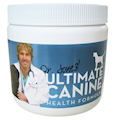 Dr. Jones’ Ultimate Canine Health Formula — 50% Off! — |
Diagnosing the problem with your pet – as you become comfortable
with the exam, then you get to know which area of your pet’s body
is affected when they are sick.
The treatment: Every natural treatment option is in my Home Study
course and my pet health manual.
These things are simple.
These are the things I teach.
Why don’t you get Veterinary Secrets Revealed today and find out
more about how it all works.
You can grab your copy by going to:
www.veterinarysecretsrevealed.com/ebook/.
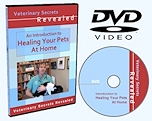 Get access to ALL of Dr. Jones’ Pet Health Information Here |
An easier (on the wallet) way to have access to my book is at my site, Dr.
Andrew Jones’ Inner Circle, at: www.theonlinevet.com/cmd.php?af=1361714. You
will have access to hundreds of pages of pet health content, along with over 40 videos, seminars, new articles, and more.
HERE ARE YOUR FREE REPRINT RIGHTS TO OUR 7-DAY
ECOURSE
WHAT TO DO WITH YOUR REPRINT RIGHTS:
1. You can use the e-course as a free bonus to subscribing to your
e-zine
2. You can give it away when someone downloads your free e-book
3. You can package it in with a course or product you sell
The only thing you can’t do is change the course. No additions or
subtractions.
HOW TO GET THE FREE REPRINT RIGHTS:
Reply to this email with your name and request.
This is the last email of my Course… The 7 Secrets To extending
your pet’s life.
I will continue to send you regular emails with my Newsletter
Veterinary Secrets in which I reveal tips to helping your pet live
a long and healthy life.
I hope these emails have been helpful to you. I know that if you
get ‘Veterinary Secrets Revealed’ you’ll find it helpful also.
Remember that no one product is going to do everything for you and
your pet. You’ll want to learn all the information you can — from
e-books and courses.
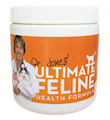 Dr. Jones’ Ultimate Feline Health Formula — 50% Off! — |
Learning is a great investment.
Don’t read one book and expect to become an expert. It’s a process
and a learning curve.
Keep learning.
Keep trying.
May our paths cross often.
Heal Your Pets At Home!
Best Wishes,
Dr Andrew Jones
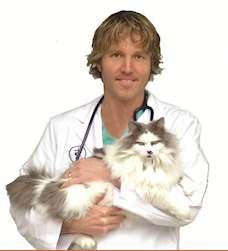
.
.
.
.
.
PRIVACY POLICY: We will never rent, sell, loan, provide, barter,
exchange or in any way make available your personal information to
others. You can unsubscribe or change your email address at any
time using the links at the bottom of this email.
Copyright 2011 Four Paws Online Ltd.
Tel: 1-800-396-1534
Fax: 1-888-398-1378
www.veterinarysecretsrevealed.com/cmd.php?af=1361714
support@theonlinevet.com







